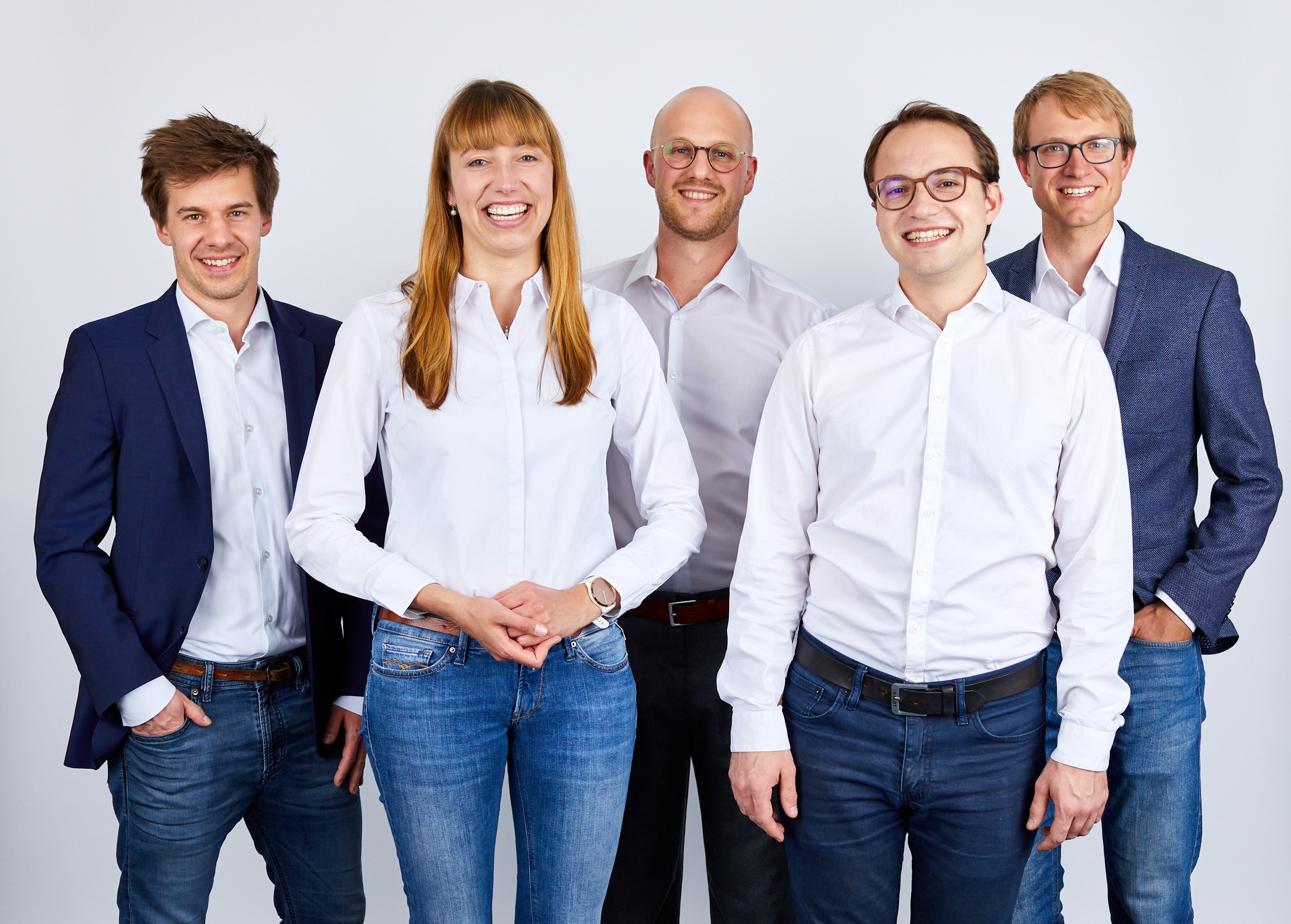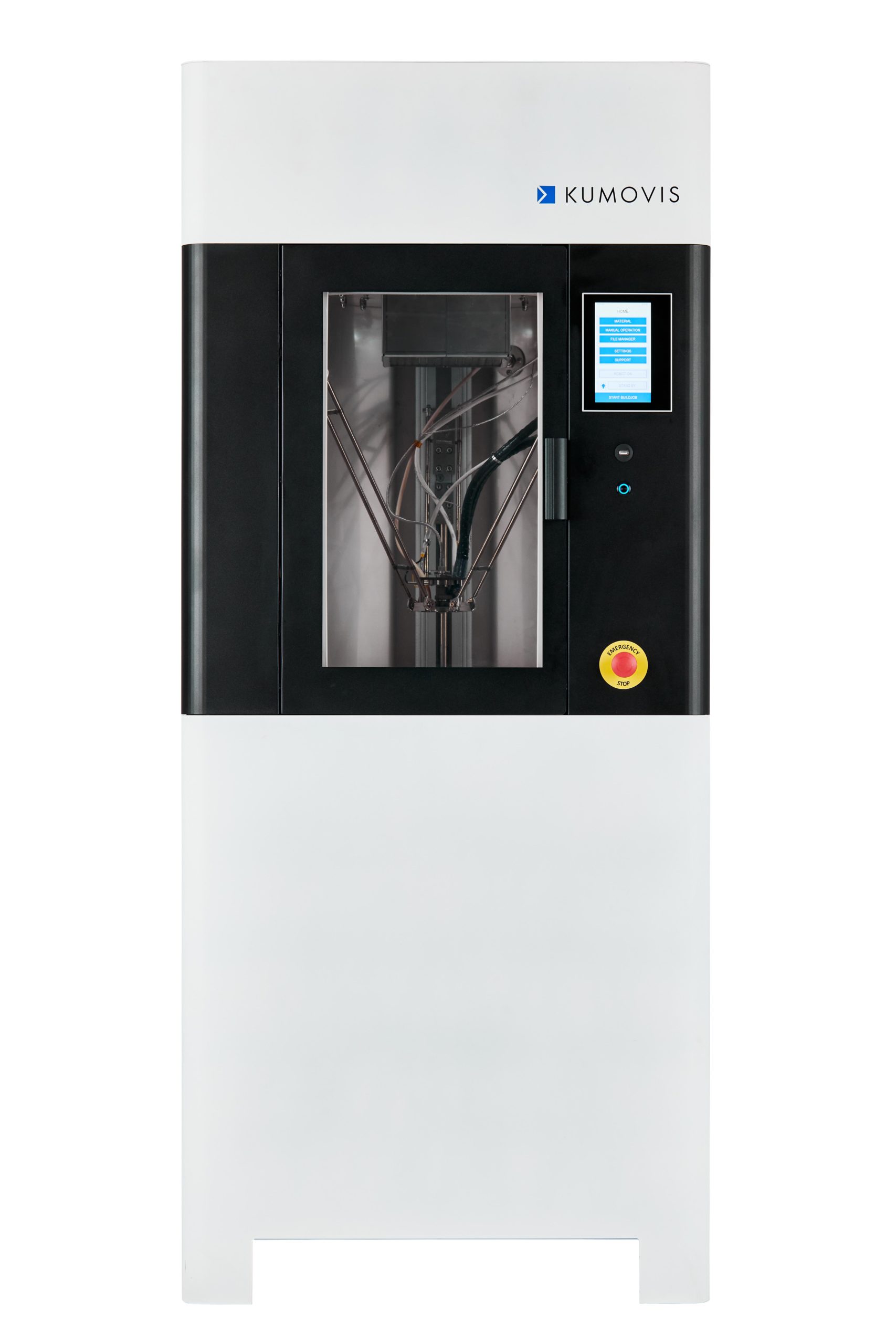The potential of 3D printing in the medical industry is still immeasurable. Even though, today, 3D printing for medical devices, personalized implants, and rapid medical prototyping is still in the early stages, there is growing interest from the medical community to create tailor-made products for a patient’s specific physiology, making it more effective than a mass-produced device. Today, patient-specific, 3D printed implants are already being successfully employed, such as for maxillofacial and neurosurgical 3D printed medical implants or 3D printed titanium implants to repair bone. With the emergence of this versatile technology, many academic researchers-turned-entrepreneurs have begun developing their own specialized systems to meet the demands of the healthcare system.
In 2015, at the Technical University of Munich (TUM), in Germany, five graduate students met during the course of their university project. While working on 3D printing for medical applications with high-performance polymers, they had trouble finding a commercial solution to print a small series of polyether ether ketone (PEEK) samples and went on to develop their own PEEK-printer, which eventually led to a startup, Kumovis. Founded at the end of 2017, the Munich-based TUM spin-off has already launched its first 3D printer specially designed for polymer medical devices and has recently raised €3.6 million (over four million dollars) in a Series A funding round, the second for the company.

Kumovis co-founders from left to right: Stefan Leonhardt, Miriam Haerst, Alexander Henhammer, Sebastian Pammer, Stefan Fischer (Credit: Kumovis)
With the potential to improve patient care through innovation, Kumovis’ 3D printing solution is a very specialized resource that could allow users to optimize patient-individualized products. 3DPrint.com virtually caught up with one of the startup’s co-founders, Sebastian Pammer, located at the company’s headquarters, just a few kilometers from TUM. Now head of research and development at Kumovis, Pammer is confident about the company’s product and its benefits to the medical field.
“We see a strong lead in medical applications for our system. The R1 3D printer has been our core development for a long time, but we always imagined ourselves as a solutions provider, looking for long term relationships with our customers. So, now we are working with end-users and material providers to optimize the entire process for specific applications,” said Pammer. “For example, we are collaborating with hospitals in Germany, 3D printing and testing new implants; as well as reaching out to surgeons to understand what applications they will need in the future.”
With the R1 3D printer, Kumovis is enabling the medical community to process high-performance materials such as PEEK and bioresorbable polymers in a reproducible and regulatory-compliant way. The new system uses Fused Layer Manufacturing (FLM) technology and is designed to provide a solution for manufacturing patient-specific medical devices, focusing on functional parts like implants or instruments.
From the start, the founders set the goal to enable MedTech companies and hospitals alike to process high-performance polymers, and consequently 3D print medical products.
In fact, the team behind Kumovis is currently investigating the possibility of installing R1 3D printers inside hospitals, in Germany and neighboring countries, as part of their vision to create a point-of-care production site where surgeons can have on-demand, in-situ manufacture of customized medical devices. But for that to ever happen, the team knew from the start that they had to develop a machine that could meet the strict requirements for manufacturing patient-specific medical devices.
“The two core aspects that define the success of our hardware are the patented temperature management system that allows for homogenous heating and ensures a good mechanical and dimensional accuracy of the printed part, and a filter system that enables users to create a ‘clean room’ environment that prevents the 3D printed part from being contaminated.”
According to Pammer, the groundbreaking technology that allows for a ‘clean room’ inside the build chamber has a validated test protocol in line with a ‘clean room ISO norm‘ to make sure that the number of foreign particles that go into the printed part is drastically reduced. It basically has the same effect as a hospital clean room, a controlled environment where air and surface contamination is constantly monitored and strictly controlled.
“When you are printing layer by layer, contamination inside the part is critical. Our device is the world’s first 3D printer with a temperature management system and clean room integration to make sure there is no contamination. To achieve that, it was very important to develop a filtered laminar airflow that safeguards the printing process from any germs or bacteria, both inside and around the part, which could otherwise jeopardize the component and even make its way into the patient’s body.”
Process monitoring is crucial in the medical sector as it helps organizations advance medical device manufacturing. That is why Kumovis engineers designed an interface for the R1 that can help users track critical process parameters such as temperatures, humidity, motor currents, or position errors in real-time. They also developed the necessary software infrastructure to analyze these data and use it for documentation as well as for quality assurance.
Currently, there are ten R1 3D printers already in use by Kumovis customers and collaborating partners. Some of the first users were medical device manufacturers KLS Martin and Samaplast, and also contract manufacturer 3DLabs.
“We are working with our customers and partners to help them design implants for manufacture because we understand that the future of our company entails a strong collaboration with the medical industry. Even mass produced implants could benefit from 3D printing technology to include features and functionalities that could otherwise not be implemented with conventional manufacturing techniques, such as conventional spinal cages.”
By employing the R1 printer, the company believes medical professionals can gain access to innovative healthcare products that meet the tough regulations of the medical industry in a resource-efficient way. Like most 3D printing machines, this device generates less waste than conventional manufacturing techniques, with a shorter delivery time of parts and a stronger connection with the people that need the implants.
“We have two different types of customers in the medical industry. On one hand, medical device manufacturers with experience in medical manufacturing techniques—like metal SLM printing with titanium and CNC milled PEEK—who are using our machines to develop new products. But we are also working together with hospitals on a long-term plan of establishing point-of-care production. We know that our device is big compared with desktop 3D printers, but small compared with big CNC milling machines or powder-based metal 3D printers. So ,that it is still very manageable for a hospital environment because it does not require a lot of infrastructure around the machine (eg. powder handling) or very difficult post-processing.”
Thanks to a new funding round by German-based Renolit, one of the world’s leading plastic product manufacturers, and Solvay Ventures—the venture capital arm of Belgian chemical company Solvay—Kumovis can enter new markets, accelerate growth, and enable medical device manufacturers to leverage the full potential of high-performance polymers.
The two new strong partners join original seed investors, High-Tech Gründerfonds and Filipa Venture Capital, in offering valuable support and resources to Kumovis, strengthening the startup and accelerating the sustainable development of its 3D printing system. Just after news of the new Series A funding came out, both Solvay and Renolit directors expressed their confidence in Kumovis to disrupt traditional manufacturing methods in a demanding medical industry by accelerating the transition to personalized medicine and reinforcing its presence in polymer-based healthcare devices.
Besides further improving its R1 3D printer and continuing growing the team, Kumovis will continue to partner with both technology and material companies to keep up with a growing medical 3D printing ecosystem. Moreover, Pammer suggested that although the new partnership would help them advance their 3D printing system to process a greater variety of thermoplastic polymers, it won’t be exclusive, and they will continue to cooperate with other world-leading material suppliers and are open to new collaborations with medical-grade material providers around the world.
Subscribe to Our Email Newsletter
Stay up-to-date on all the latest news from the 3D printing industry and receive information and offers from third party vendors.
You May Also Like
HP and Global Steel Giant ArcelorMittal Announce Strategic 3D Printing Collaboration
Fortune Global 500 company ArcelorMittal, the world’s second-largest supplier of steel, has announced a strategic collaboration with HP to develop new additive manufacturing (AM) applications for ArcelorMittal’s steel powders. Via...
3D Printing News Briefs, November 9, 2024: Concept Car, Afloat 3D Printing, & More
In today’s 3D Printing News Briefs, we’ll start with business, as Anisoprint appointed AM industry veteran Tuan TranPham as President of the Americas and APAC. Then we’ll move onto automotive...
Unprecedented Range of Mold Solutions Now Available from a Single Technology
As the additive manufacturing (AM) sector rapidly evolves, Axtra3D stands out with its Lumia X1 3D printer, pushing the boundaries of mold-making with an unprecedented range of mold solutions. Utilizing...
3D Printing Webinar and Event Roundup: November 3, 2024
Coming up this week, Stratasys continues its advanced training and North American tour, and will also hold a webinar. The EURONAVAL event is taking place, and so are JIMTOF, ICALEO,...







































